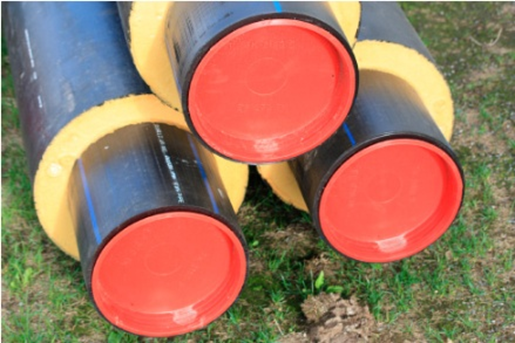While the capacity for treating end-of-life refrigeration equipment containing CFC- and HC-foams already exists – including a raft of stringent treatment quality standards (RAL GZ 728 / DIN EN 50625-2-3 / TS 50625-3-4) – far less attention has been given to ensuring the environmentally safe treatment of the insulation foams that were produced with chlorofluorocarbon and hydrocarbon blowing agents. A few years ago, the RAL Institute for Quality Assurance and Certification [Deutsches Institut für Gütesicherung und Kennzeichnung e.V.] in Germany published a set of quality assurance and test specifications (RAL GZ 729) that for the first time provided qualitative guidance on how these end-of-life products should be treated.
Up until the mid 1990s, huge quantities of CFCs (chlorofluorocarbons) were used to manufacture domestic refrigeration appliances and a wide variety of other industrial products. A large number of industrial roofs are still insulated with CFC- or ODS-containing polyurethane foam panels. Although so-called ‘natural foam blowing agents’, such as cyclopentane, have been used following the international ban on the production and use of CFCs, the very long service life of polyurethane foams means that these materials are still in widespread use in roofs, refrigerated trucks, cold storage warehouses, cold rooms, thermal storage water heaters and district heating pipelines.
The environmental impact of old CFC-blown foam products is quite simply enormous. The CFC blowing agent usually found in these foams is R11 (trichlorofluoromethane), which not only has a very high ozone depletion potential, but is also a powerful greenhouse gas with a very significant global warming potential. The negative impact of one kilogram of R11 on the Earth’s climate is almost 5000 times greater than that of 1 kg of carbon dioxide(CO2). When these materials are nearing the end of their normal service life, the question arises as to how they can be safely treated so that they do not pose a threat to the stratospheric ozone layer, nor contribute to global warming. The treatment technologies used have to be able to recover all of the CFCs in the waste foam and then to destroy them in an environmentally safe manner. Resource-friendly material recovery must also play a significant role in any modern treatment process. Mechanical recycling must be central to any treatment procedure.
These two core requirements apply equally to CFC-blown and HC-blown foams, as the emission of pentane blowing agents into the atmosphere also has to be prevented for environmental reasons and the polymer foam products need to be mechanically recycled to the greatest extent possible.
The RAL GZ 729 quality assurance scheme requires treatment companies to demonstrate not only that they can carry out the environmentally compatible and resource-friendly treatment of CFC-containing foams, but that their treatment technology meets a comprehensive set of quantitative test specifications. Any company that seeks to treat end-of-life industrial foam products in an environmentally compatible manner can apply to the RAL Quality Assurance Association for an audit that will assess the effectiveness of their treatment plant and processes. Treatment plants that have been audited and shown to meet RAL’s strict quality criteria are awarded the RAL GZ 729 quality mark (RAL Gütezeichen) for the demanufacture of foam products containing ozone-depleting substances.











